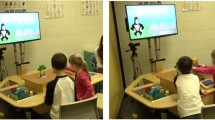ABSTRACT
The main goal of this research was to assess the effect of a dynamic environment on relationships between the three geneses (figural, instrumental, and discursive) of Spaces for Geometric Work. More specifically, it was to determine whether the interactive geometry program GeoGebra could play a specific role in the geometric work of future teachers. The training reveals education students’ use of intuitive and deductive reasoning as well as their degree of cognitive flexibility in using different facets of geometrical work. The study shows that a perspective on the development of geometric reasoning must be integrated in the development of skills for future teachers. In particular, a focus on the construction of a discursive genesis linked with elements of figural genesis must be added to the traditional focus on instrumental genesis. This reasoning requires in particular a reflection on the role of properties in developing a form of geometry directed by practical (Geometry I) or more axiomatic (Geometry II) goals.
Similar content being viewed by others
References
Artigue, M. (2002). Learning mathematics in a CAS environment: The genesis of a reflection about instrumentation and the dialectics between technical and conceptual work. International Journal of Computers for Mathematical Learning, 7(3), 245–274.
Coutat, S. (2006). Intégration de la géométrie dynamique dans l’enseignement de la pour favoriser une liaison école-collège. Grenoble: Thèse de l’université J. Fourier.
Coutat, S. & Richard, P. (2011). Les figures dynamiques dans un espace de travail mathématique pour l’apprentissage des propriétés géométriques. Annales de Didactique et de Sciences Cognitives, 16, 97–126.
Duval, R. (2005). Les conditions cognitives de l’apprentissage de la géométrie : développement de la visualisation, différenciation des raisonnements et coordination de leur fonctionnements. Annales de Didactique et de Sciences Cognitives, 10, 5–53.
Gomez-Chacon, I. & Kuzniak, A. (2011). Les Espaces de Travail Géométrique de futurs professeurs en contexte de connaissances technologiques et professionnelles. Annales de didactique et de sciences cognitives, 16, 187–216.
Houdement, C. & Kuzniak, A. (1999a). Un exemple de cadre conceptuel pour l’étude de l’enseignement de la géométrie en formation des maîtres. Educational Studies in Mathematics, 40(3), 283–312.
Houdement, C. & Kuzniak, A. (1999b). Géométrie et Paradigmes géométriques. Petit x, nº 51, 5–21.
Kuhn, T. S. (1966). The structure of scientific revolutions (2nd ed.). Chicago: University of Chicago Press.
Kuzniak, A. (2006). Paradigmes et espaces de travail géométriques. Éléments d’un cadre théorique pour l’enseignement et la formation des enseignants en géométrie. Canadian Journal of Science and Mathematics Education, 6.2, 167–188.
Kuzniak, A. (2011). L'espace de Travail Mathématique et ses genèses. Annales de didactique et de sciences cognitives, 16, 75–96.
Kuzniak, A. & Rauscher, J. C. (2011). How do teachers' approaches on geometrical work relate to geometry students learning difficulties? Educational Studies in Mathematics, 77(1), 129–147.
Laborde, C. (2001). Integration of technology in the design of geometry tasks with cabrigeometry. International Journal of Computers for Mathematical Learning, 6(3), 283–317.
Lagrange, J. B. (Ed.). (2009). Genèses d’Usages Professionnels des Technologies chez les Enseignants. GUPTEn Rapport final Septembre 2009. Paris: Université Paris-Diderot.
Mithalal, J. (2010). Déconstruction instrumentale et déconstruction dimensionnelle dans le contexte de la géométrie dynamique tridimensionnelle. Grenoble: Thèse de l’université J. Fourier.
Rabardel, P. (1995). Les hommes et les technologies. Une approche cognitive des instruments contemporains (p. 8). Paris: Université Paris.
Trouche, L. (2000). La parabole du gaucher et de la casserole à bec verseur : Etude des processus d’apprentissage dans un environnement de calculatrices symboliques. Educational Studies in Mathematics, 41, 239–264.
Yerushalmy, M. & Varda, T. (2004). Understanding dynamic behavior: Parent–child relations in dynamic geometry environments. Educational Studies in Mathematics, 57(1), 91–119.
Author information
Authors and Affiliations
Corresponding author
Rights and permissions
About this article
Cite this article
Gómez-Chacón, I.M., Kuzniak, A. SPACES FOR GEOMETRIC WORK: FIGURAL, INSTRUMENTAL, AND DISCURSIVE GENESES OF REASONING IN A TECHNOLOGICAL ENVIRONMENT. Int J of Sci and Math Educ 13, 201–226 (2015). https://doi.org/10.1007/s10763-013-9462-4
Received:
Accepted:
Published:
Issue Date:
DOI: https://doi.org/10.1007/s10763-013-9462-4



